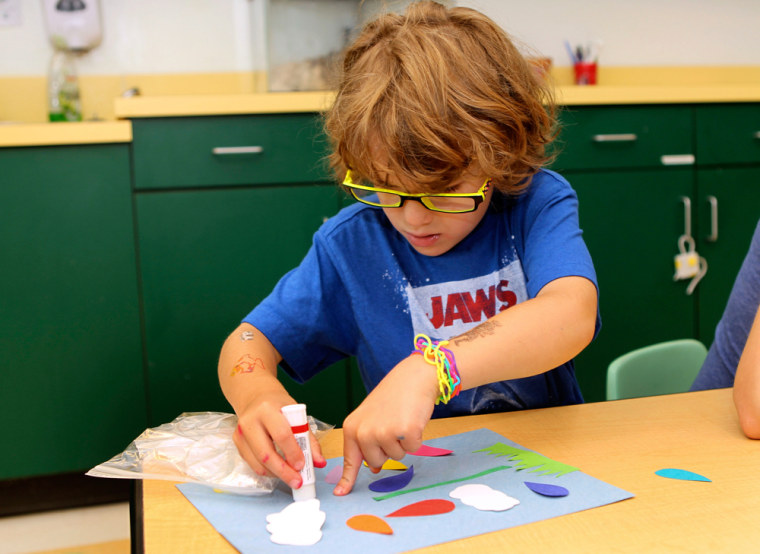States are cutting hundreds of millions from their prekindergarten budgets, undermining years of working to help young children — particularly poor kids — get ready for school.
States are slashing nearly $350 million from their pre-K programs by next year and more cuts are likely on the horizon once federal stimulus money dries up, according to the National Institute for Early Education Research at Rutgers University. The reductions mean fewer slots for children, teacher layoffs and even fewer services for needy families who can't afford high-quality private preschool programs.
One state — Arizona — has proposed eliminating its 5,500-child program entirely. Illinois cut $32 million from last fiscal year's pre-k budget and plans to slash another $48 million this year.
"The overall impact is less access to a quality education in the early years at a time when parents have reduced capability to purchase that on their own," said Steve Barnett, co-director of the Rutgers institute. "Families are getting hit from both sides."
Wealthier parents can afford to send their kids to private preschools, but children from poorer families will likely languish in lower-quality childcare that doesn't prepare them for kindergarten, experts said.
On a recent morning at Walden Early Childhood Center in Atlanta, a pre-K class worked on shape and color identification by making flowers out of glue and construction paper. Afterward, the 4-year-olds broke into stations where they put on puppet shows, read books by themselves and played at a basin filled with water and toys.
"It is important to really give kids that foundation before they go to school," said Michael Morrier, project director for the center's grant with the state. "It really closes the gap between the middle class kids and the lower-income kids."
Thirty-eight states had pre-k programs serving more than 1.2 million 3- and 4-year-olds as of last year, the latest data available.
Barnett said just four states had made cuts by last year, but that number jumped to 14 this year and likely will be another 14 next year. The cuts come at a time when the demand for quality prekindergarten is at an all-time high as states struggle to improve test scores in early grades and give more students a better chance of getting a high school diploma.
In Washington state, for example, lawmakers passed a bill that would expand the state's pre-k program for needy children from 8,000 to more than 45,000 by 2018. At the same time, the legislature cut $1.6 million from the program last fiscal year and $10.4 million this year.
Arizona voters will decide in November whether to eliminate the state's fledgling First Things First prekindergarten program — created by voters in 2006 and paid for with tobacco tax money — and use the money to balance the state's bleeding budget.
Ohio cut its $23 million program to $11 million last fiscal year, which ended June 30, meaning 12,000 poor children no longer had access to prekindergarten. Massachusetts cut $9 million last fiscal year, and New York cut more than $36 million.
For Georgia's program — among the largest in the country — a $9 million budget cut this year meant eliminating half of the 500 workers who help the poorest families navigate speech therapy, kindergarten applications and dental appointments so that the number of classrooms could grow from 82,000 to 84,000 children.
Marci Young, director of the Pew Center on the States' Pre-K Now program, said prekindergarten is the key to helping the Obama administration achieve one of its main goals — improving persistently failing schools.
"When you're thinking about turning around low performing schools or making sure you're helping close the achievement gap ... you've got to start in the early years," said Young.
She pointed to studies that show states see a $7 return for every $1 they invest in early education because children who attend prekindergarten are more likely to not need remedial education, to graduate from high school, to go to college and to have higher-paying jobs that produce more taxes.
The key, said Jacqueline Jones with the U.S. Department of Education's early learning office, is making states believe that pre-k is part of the education package rather than something they do only during flush times.
"If you see preschool as a warm and fuzzy thing you do for children or as baby-sitting, then it's easy to cut," she said. "But if we can meet the educational needs before kindergarten, we can save a tremendous amount of money in special education and remediation."
